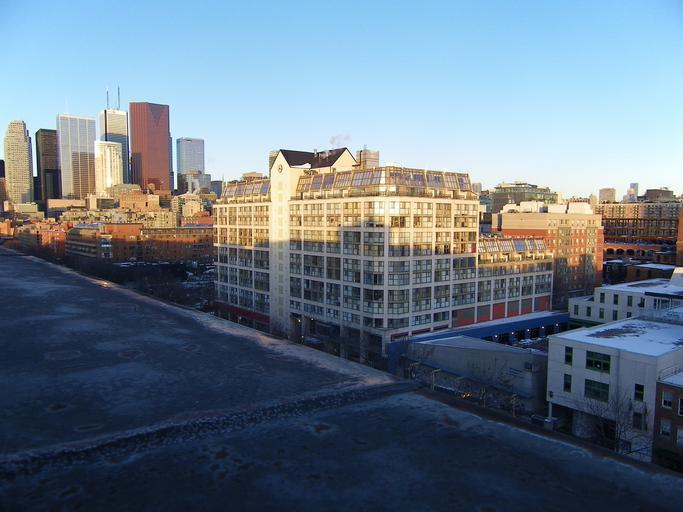Introduction
In recent years, the rise of smart technology has revolutionized various aspects of our daily lives. One area that has seen significant advancement is climate control within our homes. The demand for energy-efficient devices, indoor air quality solutions, and overall home comfort has prompted manufacturers to innovate continuously. This article delves deep into the latest trends powerhousecc.org in smart home climate technology, exploring how these advancements impact our living environments, enhance convenience, and promote energy efficiency.
Exploring the Latest Trends in Smart Home Climate Technology
Smart home climate technology refers to the automated systems and devices designed to regulate temperature, humidity, and air quality in residences. This includes everything from smart thermostats to portable air conditioners. As we explore these trends, it becomes clear that they not only contribute to comfort but also to sustainability.
The Rise of Smart Thermostats
What are Smart Thermostats?
Smart thermostats are devices that allow homeowners to control their heating and cooling systems remotely via smartphones or other connected devices. This connectivity enables users to adjust settings based on real-time data about their environment.
Key Features of Smart Thermostats
- Remote Access: Control your climate from anywhere. Learning Algorithms: Adjust settings based on user habits. Energy Monitoring: Track energy usage patterns.
Energy-Efficient Devices: A Sustainable Choice
Why Choose Energy-Efficient Devices?
The shift towards energy-efficient appliances is not just a trend; it's a necessity for sustainable living. These devices consume less energy than traditional models, leading to reduced utility bills and a smaller carbon footprint.
Types of Energy-Efficient Devices:
Energy-Saving Heaters Compact Dehumidifiers Smart Air PurifiersPortable Air Conditioners: Flexibility in Cooling Solutions
Benefits of Portable Air Conditioners
Portable air conditioners offer flexibility for cooling small spaces without the need for extensive installation processes. They are ideal for apartments or rooms where traditional units cannot be installed.
- Space-saving design Easy mobility Quick setup
Indoor Air Quality Solutions: Breathing Easy at Home
What Are Indoor Air Quality Solutions?
Indoor air quality (IAQ) solutions help maintain clean and safe air within our homes by filtering pollutants, allergens, and toxins.
Popular IAQ Solutions
- Air Purifier Troubleshooting: Knowing how to maintain your air purifiers ensures optimum performance. Air Quality Monitors: These devices alert homeowners when pollutant levels exceed safe thresholds.
Humidity Control Solutions: Balancing Indoor Humidity
Why Is Humidity Control Important?
Maintaining balanced humidity levels is crucial for comfort and health. High humidity can lead to mold growth, while low humidity can cause respiratory issues.
Types of Humidity Control Solutions:
Compact dehumidifiers Whole-home humidifiersClimate Control Devices: The Heart of Smart Homes
What Are Climate Control Devices?
Climate control devices work together within a smart home ecosystem to manage temperature and humidity effectively.
Examples of Climate Control Devices:
- Smart thermostats Automated blinds HVAC systems
Home Comfort Devices: Enhancing Everyday Life
Home comfort devices aim to create a pleasant living environment tailored to individual preferences.

Examples Include:
- Quiet fans for home Multi-use home appliances (like heaters with fans)
Quiet Home Appliances: Noise-Free Living Spaces
Why Does Noise Matter?
Noise pollution can significantly affect mental well-being, making quiet appliances an essential consideration when designing a comfortable home environment.
Top Quiet Home Appliances:
Quiet room dehumidifiers Compact and quiet fans Smart Home Climate Management Systems
Smart home climate management systems integrate various technologies into one cohesive unit for streamlined operations.
Key Benefits Include:
Improved energy efficiency Centralized control through mobile apps Portable Cooling Devices: Convenient Comfort Anywhere
Portable cooling devices provide relief during hot weather without compromising indoor space or aesthetics.
Popular Options:
Portable air conditioners Evaporative coolers Environmental Control Devices: Sustainability Meets Technology
Environmental control devices focus on creating sustainable living conditions by managing resources effectively.
Advanced Air Purifier Technology: Keeping Your Indoor Air Clean
Modern air purifiers utilize advanced filtration technologies such as HEPA filters and UV light to eliminate harmful particles from the air.
Best Practices for Air Quality Monitors
Using an air quality monitor helps identify potential pollutants before they become a health risk.
FAQs About Smart Home Climate Technology
What are the benefits of smart thermostats?- Smart thermostats allow users to optimize their heating and cooling schedules based on usage patterns, leading to increased energy savings.
- Portable ACs are versatile, movable, and easier to set up compared to window units which require permanent installation.
- Look for features like real-time data monitoring, compatibility with smart home systems, and alerts for poor air quality.
- Use houseplants, ensure proper ventilation, and regularly change HVAC filters.
- Yes! Setting your thermostat a few degrees higher in summer or lower in winter can significantly reduce energy consumption.
- Dehumidifiers help maintain optimal humidity levels which prevent mold growth and improve overall comfort.
Conclusion
As we navigate through life’s challenges amidst changing climates and increasing environmental concerns, embracing smart home climate technology offers practical solutions that enhance our daily living experiences while prioritizing sustainability. From innovative products such as portable cooling devices and compact dehumidifiers to advanced indoor environmental control systems—these trends signify a shift towards smarter living choices that benefit both individuals and the planet alike.
By staying informed about these trends in smart home climate technology, homeowners can make educated decisions that not only enhance their comfort but also contribute positively towards environmental sustainability—proving that modern living can indeed harmonize with nature's rhythms!